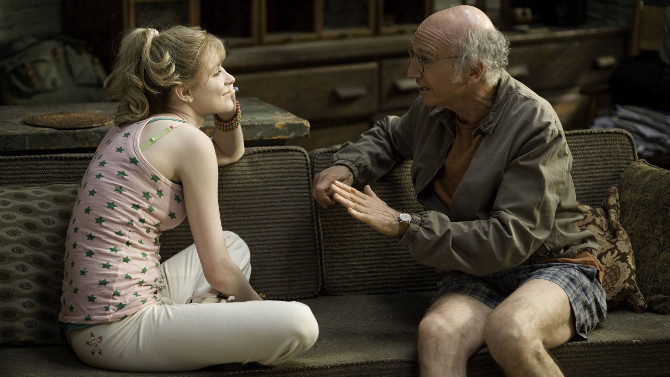
Plights, Camera, Action
Often deemed to be the last classic film made by the great Buster Keaton, The Cameraman (1928) was the final time the silent legend would have anything close to full creative control over one of his own features... as he folded his independent studio to sign with Metro-Goldwyn-Mayer (MGM) – who promptly made him their third highest paid star. Though his future would soon turn very bleak, this first film with the new studio was his own idea.
-

Larry David Playing Larry David Playing Woody Allen
Whatever WorksApril 12, 2016Chance, luck and fate are themes that are often examined in a plethora of genres. One director who analyses these topics in interesting ways is the always entertaining Woody Allen. Many of his recent motion pictures, including Match Point, have scrutinized these random and inscrutable aspects of life: with the phrase "I’d rather be lucky than good" being one of the observations found in the above stated film. Another of his movies, this one more comedic, that tackles these topics is the lesser known 2009 flick Whatever Works.
-
Scare Up Some Laughs
 Hold That GhostAbbott and Costello Meet FrankensteinApril 8, 2016
Hold That GhostAbbott and Costello Meet FrankensteinApril 8, 2016There are many classic comedians that are still honoured and remembered fondly today. People like the Marx Brothers, the Three Stooges, Charlie Chaplin and Buster Keaton are highly regarded funny men, yet the comedy team of Bud Abbott and Lou Costello are, in my opinion, less quickly thought of than those mentioned above. Despite this, many of their films, which include a mixture of memorable physical comedy and witty dialogue, still hit the funny bone today. Two of my favourites mix comedy with the horror genre: 1941's Hold That Ghost and 1948's Bud Abbott and Lou Costello Meet Frankenstein.
-

Batter Up
Rookie of the YearMarch 20, 2016The fantasies that flow within a child’s mind are something special that I believe most people lose as they get older (when doubt, reality and logic come into play). Kids have the innate ability to dream about being a professional athlete, a space cowboy or any other bizarre profession (that would baffle the adult mind). The 1993 family sports film Rookie of the Year captures this unbelievable concept of a childhood wish becoming amazing reality.
-

Like a Fine Wine
Arsenic and Old LaceJanuary 22, 2016It is usually quite easy to spot a film that is based on a stage play, as the movie is generally set in one, never-changing location. Alfred Hitchcock’s Rope and Gene Saks’ The Odd Couple are just two examples of iconic films that originally came from the stage, and the same can be said for the movie being reviewed here today – the 1944 Frank Capra black comedy Arsenic and Old Lace.
-

Cool Runnings Warms the Heart
Cool RunningsJanuary 12, 2016The phrase "based on true events" is used a lot in films these days, but as we know, it is a very loose term. Though there are kernels of truth in most of these movies, it is usually just an idea that captures the screenwriters’ imagination which is then turned into his or her own fictionalized version of history. One movie that exemplifies this is the Jon Turteltaub (National Treasure, Last Vegas) Disney flick Cool Runnings.
-
Star Pick with Nathan Andrew Jacobs
 Sometimes Less is MoreRushmoreDecember 30, 2015
Sometimes Less is MoreRushmoreDecember 30, 2015Nathan Andrew Jacobs, the writer/director of the independent film Killing Poe, spoke to me at the St. Lawrence International Film Festival back in October. According to him, his film, which built up an unbelievable buzz over the four day festival, has been influenced by the work of Wes Anderson. He mentioned two of Anderson’s movies – The Royal Tenenbaums and Rushmore as being his favourites, and the latter will be reviewed here today.


